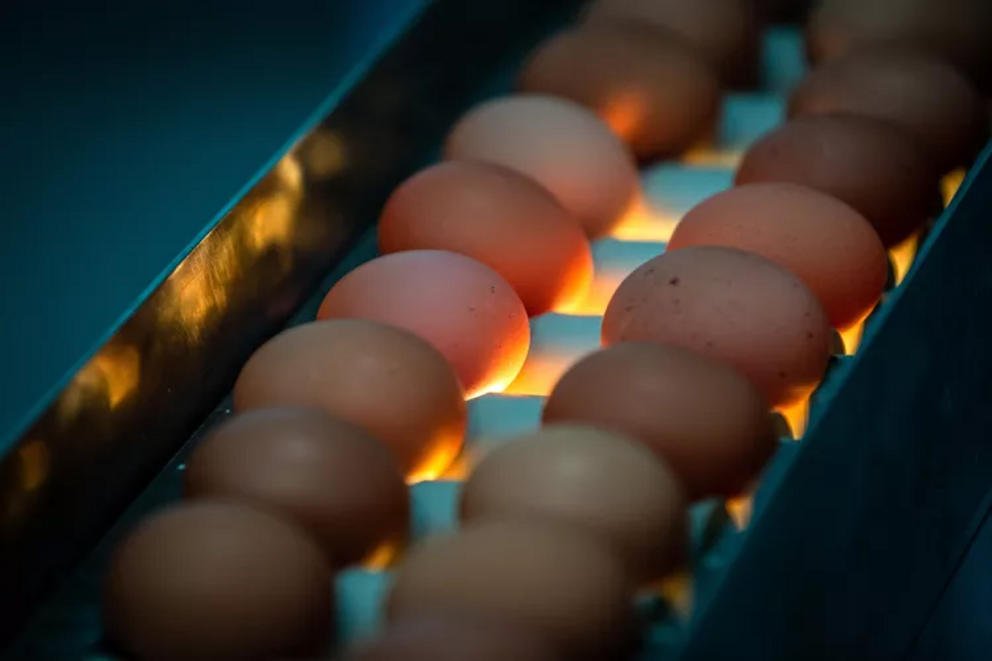New gene-edited hen could prevent slaughter of billions of male chicks
Fact checked by Hayley Bruning
The hen lays an egg that "auto-destructs" development of male embryos when exposed to blue light.
Scientists in Israel have developed a gene-edited hen that could eliminate the need to cull billions of male chicks every year. Male layer chicks are of no value to the egg-laying industry, since they're not female and cannot lay eggs; and they're unwanted by the meat industry, since they have the wrong body type and are not fast-growing broilers. An estimated seven billion male chicks are culled annually, using methods such as gassing and grinding.
This is understandably troubling for many people, and various attempts to solve the conundrum have been proposed over the years. Mainly these revolve around trying to identify a bird's sex as early as possible so as to discard it prior to development or hatching.
This latest development, however, takes it to another level by preventing the male chick from developing altogether. The "Golda" hen, as it's called, has DNA edited into it that stops the development of male embryos when the egg is exposed to blue light for several hours. Female embryos are not affected by the light and hatch and grow as usual. They do not contain any of the edited material, nor do the eggs they lay, so consumers need not be concerned about consuming genetically modified eggs.
Dr. Yuval Cinnamon of the Volcani Institute and chief scientist for this project spoke to the BBC. "Farmers will get the same chicks they get today and consumers will get exactly the same eggs they get today. The only minor difference in the production process is that the eggs will be exposed to blue light."1
The BBC explains how the gene-edited hens end up with all-female chicks. Females carry a W and a Z chromosome (WZ). Males carry two Z chromosomes (ZZ). The Golda hen has a W chromosome and a gene-edited Z* chromosome (WZ*), which halts embryo development when exposed to blue light.
If WZ* + ZZ = WZ, + blue light = female chick hatches
If WZ* + ZZ = Z*Z, + blue light = male doesn't hatch
The actual science is being kept under wraps, since the Volcani Institute plans to license its technology through a company called Poultry by Huminn. There is no peer-reviewed study yet. But the animal welfare organization Compassion in World Farming (CIFW) has been following the research closely for three years, visited the firm, and backs the development.
Treehugger spoke with CIFW's Research and Education Team to learn more. They explained that the great advantage of this gene-edit is that it appears to have no detrimental effect on animal health and welfare.
"This gene-edit solution is less intrusive than the current available alternative, in-ovo sexing and the destruction of the eggs containing male embryos," CIFW explained. "Our current support for this technology is in principle, as the next important step is to see whether the hen and the female chicks she produces—who will lay eggs for human consumption—can go through a commercial lifespan without any unexpected welfare issues arising."2
Scientist and chicken sex determination expert Günes Taylor voiced support when queried by a Twitter follower. She wrote, "[Though] the paper isn't out, the concept is theoretically sound. The modified Z [chromosome] won't be inherited by the female chicks so the consumer material isn't GM." She added that it's unknown at what point the male chicks "inherit the 'auto-destruct' Z cease development" and how hens will respond to the blue light exposure. "Be interesting to see the paper," she finished.
It remains unclear when (or if) a paper will be published. The Volcani Institute did not respond to Treehugger's requests for comment.
In an ideal world, the industrial livestock production system would be completely overhauled and find a role for both male and female chicks. CIFW said, "The ultimate solution is dual-purpose breed chickens, where males are raised for meat, females lay eggs and go for meat at end of lay. However, the industry will take a long time to transition, so the interim solution is an urgent end to the culling of male chicks."2
The BBC reports that the research is now at an "advanced stage of development" and the team is working with breeders to "refine the process."1
For the rest of this article please go to source link below.
For full references please use source link below.

